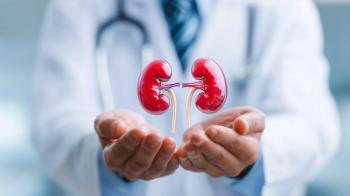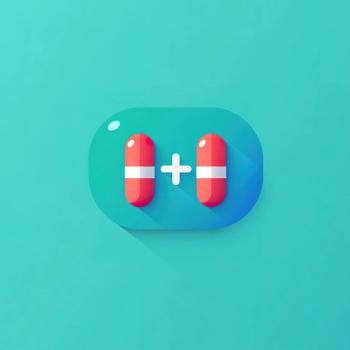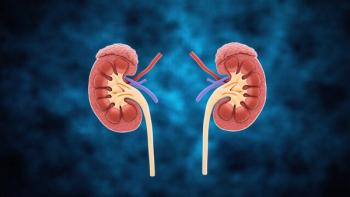
Supplements And Featured Publications
- Advances in the Treatment of IgA Nephropathy
Looking to the Future of IgA Nephropathy Treatment
A Q&A with Jonathan Barratt, Ph.D., FRCP.
MHE: What do you see as the most significant unmet needs in the diagnosis and management of immunoglobulin A nephropathy (IgAN)?
Barratt: The development of noninvasive diagnostic tools and early detection methods constitute the most significant needs. Currently, diagnosis relies on kidney biopsies, which are invasive and uncomfortable for patients. There is a critical need for blood or urine biomarkers that can identify IgAN and provide prognostic information about the risk of progressive kidney disease.
Patients with IgAN often present late because the disease is asymptomatic and not routinely screened for. Ideally, a public health-level screening process could identify individuals at risk, allowing for earlier intervention and closer monitoring.
Data from UK Biobank suggest that the majority of IgAN cases remain undiagnosed,1 a situation likely mirrored in the U.S. Therefore, there is a substantial unmet need for better diagnostic methods to reduce reliance on invasive kidney biopsies and improve patient outcomes through earlier detection and management.
MHE: What are the long-term outcomes of these patients with IgAN, and how often do patients progress to end-stage renal disease?
Barratt: Long-term outcomes are often poor, particularly because many patients are diagnosed late in the course of their disease. By the time diagnosis occurs, patients typically have already lost at least half of their functioning nephrons, making treatment challenging. Population-level data from the U.K., Europe and the U.S. highlight that a significant number of these patients will likely develop kidney failure during their lifetime with current treatments.2
Moreover, among patients with IgAN, the U.S. has a higher proportion of patients being diagnosed in late-stage chronic kidney disease (CKD) than that seen in European countries. Specific populations, such as Asian American and Hispanic patients, exhibit a higher risk of having this disease.2
Understanding these population-specific nuances is crucial for improving management and outcomes for all patients with IgAN.
MHE: How does IgAN impact the quality of life of patients?
Barratt: IgAN significantly impacts patients’ quality of life, both physically and psychosocially. At the recent IgAN Foundation’s annual patient meeting in Austin, Texas, patients shared their experiences of dealing with this disease. A major issue is the lack of accessible, high-quality information about IgAN and the limited expertise among nephrologists, leading to unanswered questions and increased patient anxiety.
Physically, the symptom burden is high and poorly understood. Despite medical textbooks often describing IgAN as being asymptomatic, patients report significant symptoms that many general nephrologists are not well versed in managing.
Psychosocially, the impact is profound, especially since this disease primarily affects young adults. These individuals, often at the start of their careers, planning families and making major life decisions, are suddenly faced with a chronic illness that has no cure and the possibility of ending up on dialysis or needing a kidney transplant. This diagnosis can drastically alter their life plans and aspirations, causing significant mental health challenges.
Furthermore, the disease affects not only the patients but also their families and friends. The emotional and practical support needed places a considerable burden on partners, parents, siblings and extended families, deeply affecting their lives as well.
MHE: What evidence-based treatments are currently available for managing IgAN?
Barratt: Evidence-based treatments are evolving rapidly. According to the latest KDIGO (Kidney Disease: Improving Global Outcomes) guidelines, management includes lifestyle modifications such as maintaining an ideal weight, regular exercise, dietary sodium restriction and smoking cessation.3 Pharmacologically, patients should be on renin-angiotensin system (RAS) inhibitors like ARBs (angiotensin II receptor blockers) to control high blood pressure and reduce proteinuria.
For patients at high risk of progressive kidney function loss, indicated by residual proteinuria above 1 gram per day, the guidelines recommend considering enrollment in clinical trials. Systemic corticosteroids, such as prednisone or methylprednisolone, are an option, although they come with significant toxicity and uncertain long-term efficacy.
Since the publication of the 2021 guidelines, the treatment landscape has significantly advanced. A delayed-release formulation of budesonide, which targets the formation of IgA immune complexes, is now available in the U.S., Europe, China and other regions. Additionally, SGLT2 (sodium-glucose cotransporter-2) inhibitors have been shown to slow kidney function decline and protect against cardiovascular disease.4 Sparsentan, a dual endothelin angiotensin receptor antagonist, has demonstrated efficacy in slowing kidney function loss beyond what RAS inhibitors alone can achieve.5
Looking ahead, we anticipate the approval of two new therapies by the end of this year, with additional treatments expected every 12 to 18 months over the next several years. This expanding arsenal of treatments promises to improve outcomes for patients with IgAN by addressing both the specific pathology of the disease and the general pathways of kidney function loss.
MHE: What is your approach to managing a patient with IgAN? How do you go about individualizing a treatment regimen for a patient?
Barratt: When managing a patient with IgAN, my primary goal is to stop the formation of IgA immune complexes and prevent them from depositing in the glomeruli, which causes kidney damage. The first drug I reach for is delayed-release formulation budesonide, as it has been shown to effectively address this issue.6 If the initial kidney biopsy reveals significant inflammation, I may consider a short course (two to four weeks) of systemic glucocorticoids to control it, although this is rare in my practice with European ancestry patients.
Simultaneously, I assess the extent of chronic damage and nephron loss. Given that many patients in the U.K. present late, most will need additional treatments to protect the remaining nephrons. This typically includes a RAS inhibitor, an SGLT2 inhibitor, and potentially a dual endothelin angiotensin receptor antagonist like sparsentan.
Prescription practices in the U.K. are guided by specific levels of proteinuria and GFR (glomerular filtration rate), and access to drugs like delayed-release budesonide is currently limited by its approval only for patients with high levels of proteinuria (more than 1.5 g of urine per 1 g of creatinine), but this is expected to change. For patients with diabetes, an SGLT2 inhibitor is essential. For others, the choice depends on the degree of kidney function already lost. At the moment, sparsentan is not approved in the U.K.
In summary, my approach involves a combination of targeting the production of pathogenic IgA with delayed-release budesonide, managing any inflammation with systemic glucocorticoids and protecting kidney function with RAS inhibitors, SGLT2 inhibitors and potentially sparsentan, when approved in the U.K., tailored to the individual patient’s condition and response to treatment.
MHE: How do you monitor disease progression and ensure treatment effectiveness in managing IgAN?
Barratt: During follow-up, I monitor disease progression and treatment effectiveness using serum creatinine, eGFR (estimated glomerular filtration rate) and the urine protein-to-creatinine ratio. Blood pressure is also meticulously managed. During the active phase of treatment, I monitor these markers every four to eight weeks, and every three to four months over the long term. While some nephrologists consider hematuria as an indicator, I primarily focus on proteinuria and changes in GFR to guide my clinical decisions.
MHE: Given this approach, have you encountered patients who are unresponsive to standard-of-treatment regimens? What are the next steps if patients are not responding to initial treatments?
Barratt: Previously, we had limited options and continued with existing treatments. However, with the emergence of new drugs, we now have more choices for patients who are unresponsive to standard regimens. Currently, we use delayed-release budesonide to reduce pathogenic IgA. In the next 18 months, we expect two additional drugs, atacicept and sibeprenlimab, targeting BAFF and APRIL signaling, that are also capable of reducing pathogenic IgA levels.
For glomerular inflammation, systemic glucocorticoids are our primary option, but iptacopan, an alternative pathway complement inhibitor, has just been approved for use in IgAN in the U.S. and will be available in Europe in the future.
In terms of general treatments, we have RAS inhibitors, SGLT2 inhibitors and a dual endothelin angiotensin receptor antagonist. We anticipate the availability of atrasentan, an endothelin receptor antagonist that can be combined with any RAS inhibitor, and potentially the mineralocorticoid receptor antagonist finerenone. Additionally, GLP-1 receptor agonists, particularly relevant for patients with IgAN and diabetes or who are significantly overweight, could be considered.
With these diverse tools, we can tailor treatments based on the patient’s phenotype to better protect their kidneys and slow the rate of kidney function loss.
MHE: What are the greatest challenges in treating patients with IgAN?
Barratt: IgAN affects young people and often requires lifelong medication. This is the greatest challenge. The goal is to switch off the disease permanently, so patients aren’t dependent on immunosuppressive drugs indefinitely, as this brings risks such as increased susceptibility to infections and possibly reduced vaccine responses.
Currently, we don’t know how long treatment should last. Most trials involve continuous treatment for two years with an open-label extension, but they don’t address long-term outcomes after stopping the medication. The key question for nephrologists is: When can we safely stop treatment? Unfortunately, we don’t yet have an answer, and it will take years of study to determine.
MHE: How do we manage the costs of providing expensive lifelong treatment for a rare disease like IgAN?
Barratt: This is a significant concern. With the advent of new treatments, we must consider the right combinations and dosages to optimize efficacy while also considering healthcare costs. Previously, we had no treatments; now, we can explore combinations targeting different aspects of the disease, assuming they are affordable.
For this, we need reliable biomarkers to guide our decisions. Current clinical trials are collecting vast biorepositories of blood and serum, offering an opportunity to develop partner diagnostics. These diagnostics can help us determine early on if a patient is responding to an expensive drug. If they are, we continue; if not, we quickly switch to an alternative.
Collaborating with pharmaceutical companies to develop these biomarker panels is crucial for efficiently managing treatment and ensuring cost-effectiveness.
MHE: You’ve mentioned upcoming advancements in IgAN. In your opinion, what are the most promising developments we should look forward to?
Barratt: Delayed-release budesonide is the first drug to reduce pathogenic IgA, marking a significant advancement. Additionally, drugs targeting BAFF and/or APRIL signaling, crucial cytokines in the production of pathogenic IgA, show promise. Among the five drugs in this category being evaluated, atacicept currently stands out with 18-month follow-up data showing it nearly halts kidney function loss in high-risk patients,7 bringing loss of kidney function back to the level of physiological aging - a potential game-changer.
Complement inhibitors also offer a new approach to blocking inflammation without the toxicity of systemic steroids. These inhibitors may also help slow kidney function loss beyond glomerular inflammation, impacting tubular interstitial inflammation and fibrosis.
Moreover, endothelin receptor antagonism could inhibit glomerular inflammation and protect mesangial cells from IgA immune complexes.
The potential combination of these different drug classes is exciting as it could allow for shorter treatment durations or lower doses, minimizing side effects. These advancements are going to significantly improve the management of IgAN.
MHE: Where do you see the field going in the next five years?
Barratt: In the coming years, our focus should be on ensuring access to affordable drugs. With the current and upcoming treatments, we realistically could prevent kidney failure in most patients with IgAN. The key is early diagnosis, allowing us to save more nephrons.
We need to diagnose the disease earlier, perform kidney biopsies sooner and intervene before patients reach advanced stages. This approach represents a significant shift, aiming to diagnose more people and treat them earlier. If we can secure access to these likely expensive drugs, we could potentially prevent kidney failure in any patient diagnosed with IgAN.
REFERENCES
1. Sukcharoen K, Sharp SA, Thomas NJ, et al. IgA nephropathy genetic risk score to estimate the prevalence of IgA nephropathy in UK Biobank. Kidney Int Rep. 2020;5(10):1643-1650. doi:10.1016/j.ekir.2020.07.012
2. Kwon CS, Daniele P, Forsythe A, Ngai C. A systematic literature review of the epidemiology, health-related quality of life impact, and economic burden of immunoglobulin A nephropathy. J Health Econ Outcomes Res. 2021;8(2):36-45. doi:10.36469/001c.26129
3. Kidney Disease: Improving Global Outcomes (KDIGO) Glomerular Diseases Work Group. KDIGO 2021 Clinical practice guideline for the management of glomerular diseases. Kidney Int. 2021;100(4S):S1-S276. doi:10.1016/j. kint.2021.05.021
4. Del Vecchio L, Allinovi M, Comolli S, Peiti S, Rimoldi C, Locatelli F. Drugs in development to treat IgA nephropathy. Drugs. 2024;84(5):503-525. doi:10.1007/ s40265-024-02036-1
5. Rovin BH, Barratt J, Heerspink HJL, et al; DUPRO Steering Committee and PROTECT Investigators. Efficacy and safety of sparsentan versus irbesartan in patients with IgA nephropathy (PROTECT): 2-year results from a randomised, active-controlled, phase 3 trial. Lancet. 2023;402(10417):2077-2090. doi:10.1016/ S0140-6736(23)02302-4
6. Lafayette R, Kristensen J, Stone A, et al; NefIgArd Trial Investigators. Efficacy and safety of a targeted-release formulation of budesonide in patients with primary IgA nephropathy (NefIgArd): 2-year results from a randomised phase 3 trial. Lancet. 2023;402(10405):859-870. doi:10.1016/S0140-6736(23)01554-4
7. Vera Therapeutics presents positive 72-week data showing eGFR stabilization in the phase 2b ORIGIN clinical trial OLE in IgA nephropathy. News release. Vera Therapeutics. January 25, 2024. Accessed August 6, 2024. https://ir.veratx.com/news-releases/news-release-details/ vera-therapeutics-presents-positive-72-week-data-showing-egfr
Articles in this issue
Newsletter
Get the latest industry news, event updates, and more from Managed healthcare Executive.






















































